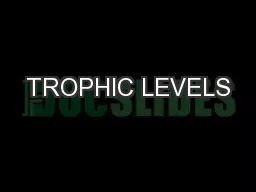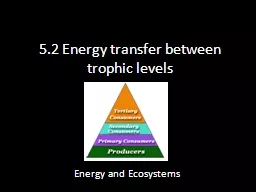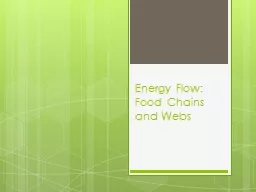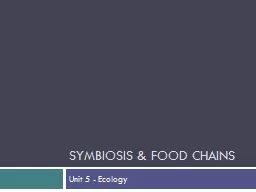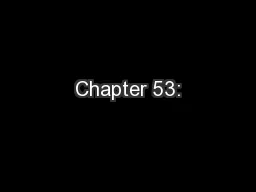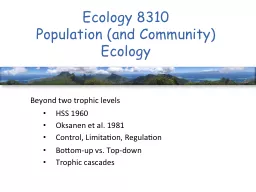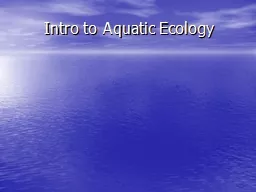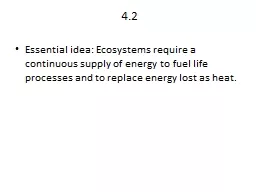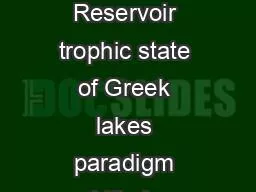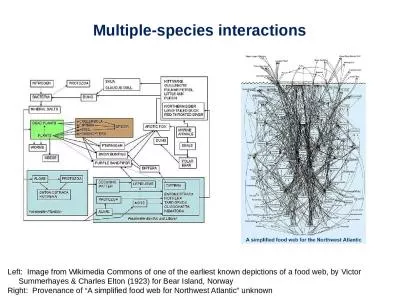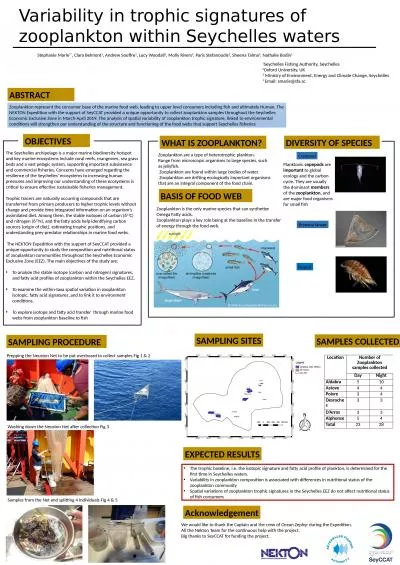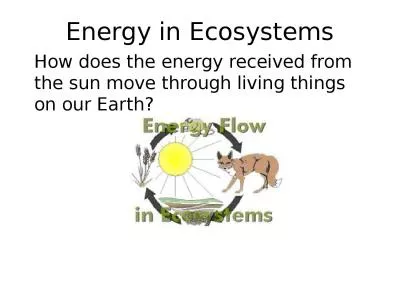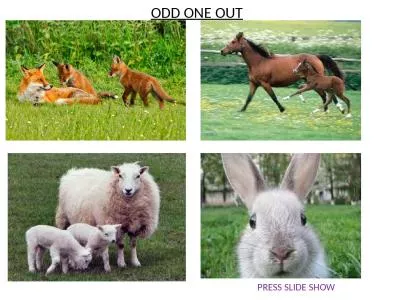PPT-TROPHIC LEVELS
Author : tatiana-dople | Published Date : 2017-05-15
Detritivore an organism that feeds off of dead plant or animal matter breaks down organic material Organisms that produce their own energy PRODUCERS CONSUMERS
Presentation Embed Code
Download Presentation
Download Presentation The PPT/PDF document "TROPHIC LEVELS" is the property of its rightful owner. Permission is granted to download and print the materials on this website for personal, non-commercial use only, and to display it on your personal computer provided you do not modify the materials and that you retain all copyright notices contained in the materials. By downloading content from our website, you accept the terms of this agreement.
TROPHIC LEVELS: Transcript
Download Rules Of Document
"TROPHIC LEVELS"The content belongs to its owner. You may download and print it for personal use, without modification, and keep all copyright notices. By downloading, you agree to these terms.
Related Documents

